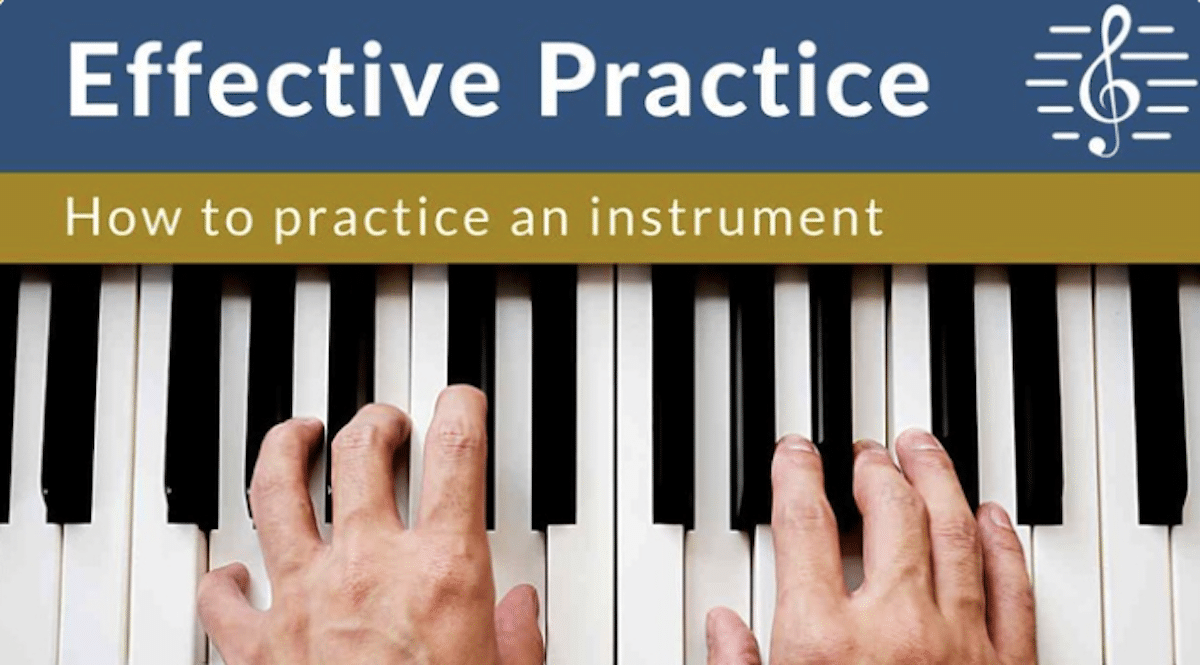You’ve probably heard the advice to “practice with a metronome” before — whether it’s from your teacher, a peer, or your favorite music YouTuber.
Practicing with a metronome will help you maintain a steady tempo and precise rhythm, much like a ruler helps an artist draw straight lines. Just as artists erase their guidelines for a clean final drawing, you’ll eventually want to perform your piece without the metronome.
If you’re ready to follow this advice but don’t know where to start, this article is for you!
1. Set a Tempo
The first step is to set your metronome at the tempo (or speed) you want to play.
You’ll have to choose a number corresponding to the number of beats per minute (BPM) your metronome will click at. The higher the BPM number, the faster the metronome will click.
When practicing a new piece of music, start slow and gradually increase the speed as you get more and more competent.
Recommended Course
If you need help improving your practice routine, check out this course from Music Matters. It will give you the tools to get the most out of your practice sessions and improve your playing quicker.
IMPROVE YOUR PRACTICE2. Find Your Goal Tempo
Before you decide what tempo you’ll practice at, it’s a good idea to get a sense of how fast the music should be played in a performance.
Your music should include a tempo marking — whether it’s a specific BPM or a descriptive word that encompasses a range of BPM.
Some tempo markings will include both!

Here are some common tempo descriptions and their BPMs:
- Larghissimo — extremely slow (< 24 BPM)
- Grave — very slow, solemnly (25–45 BPM)
- Largo — broadly (40–60 BPM)
- Lento — slowly (45–60 BPM)
- Adagio — slowly, with great expression (66–76 BPM)
- Andante — at a walking pace (76–108 BPM)
- Andantino — slightly faster than andante (80–108 BPM)
- Moderato — at a moderate speed (98–112 BPM)
- Allegro — fast, quickly, and bright (120–156 BPM)
- Vivace — lively and fast (156–176 BPM)
- Presto — very, very fast (168–200 BPM)
3. It’s Okay (Even Recommended!) to Start Slow
Remember that the written tempo is the goal, but you do not have to be able to play at this speed right away!
If you are comfortable playing at the written speed, go for it! However, if the music is really fast, it’s recommended to start at a slower tempo.
Lining up your notes and rhythms with the metronome at a slower speed is way more helpful than playing at full speed right away. As you get comfortable, you can gradually increase the tempo to the written speed.
4. Select How Many Beats (Optional)
Some metronomes will allow you to choose how many beats are in a measure, so it can help you keep track of each measure.
How many beats you set the metronome to will depend on the time signature of the piece.
If your piece is in 4/4, you can set the metronome at four beats. It can even emphasize the first of every four beats. This way, you can keep track of the beginnings of each measure as you’re playing.
Next: Read Our Post on the 10 Most Important Traits of Good Musicians.
5. Feel the Beat
Before you start playing, it’s important to take some time to feel the beat.
Listen to a few metronome clicks, and maybe even tap along to the metronome with your hands or feet.
Internalizing the pulse will help you stay together with the metronome while you play. It’s also important for when you take the metronome out of the equation later.
6. Line Up Your Rhythms
When practicing with a metronome, it’s helpful to divide your music into sections.
The length of a section should depend on how comfortable you are with the music — it could be one phrase or until the next tempo change.
As you play, listen to make sure your beats are always lining up with the metronome. If you get off from the metronome, stop and try the section again.
Make sure you can play each section comfortably with a metronome before bumping up the speed or moving on to the next section.
7. Subdivide
Sometimes, there will be so many small rhythms within a beat that it’s hard to line them up with the normal metronome clicks. In this case, you can subdivide.
Subdivision is the splitting of beats into smaller units. For instance, if you have a bunch of 16th notes to play, you can try setting your metronome to the eighth note rather than the quarter note.
This will double the amount of metronome clicks, giving you more opportunities to check and stay aligned.
Once you can easily play a section with the subdivisions, it should be much easier to go back to playing with the big beats!
8. Record Yourself
A great tip to make sure you are truly lined up with the metronome is to record yourself playing with the metronome and listen back. This helps you catch details you might miss while focusing on playing.
It’s also useful for checking your timing once you play without the metronome. You can tap along to your recording or use the metronome separately to verify your tempo and rhythms.
If there’s a section that isn’t quite right, practice that section with the metronome some more.
9. Be Patient!
Remember that practicing with a metronome is not a one-and-done deal! It takes repetition to get good at playing along with the metronome, and you have to be patient with gradual tempo increases.
Even once you can play a piece at full tempo without the metronome, you may have to go back and touch up some sections with it once in a while.
Ready to Get Started?
Now that you know how to practice with a metronome, you can get started using our online metronome!
Our metronome includes all the features mentioned in this article, including emphasizing downbeats and subdivisions.




